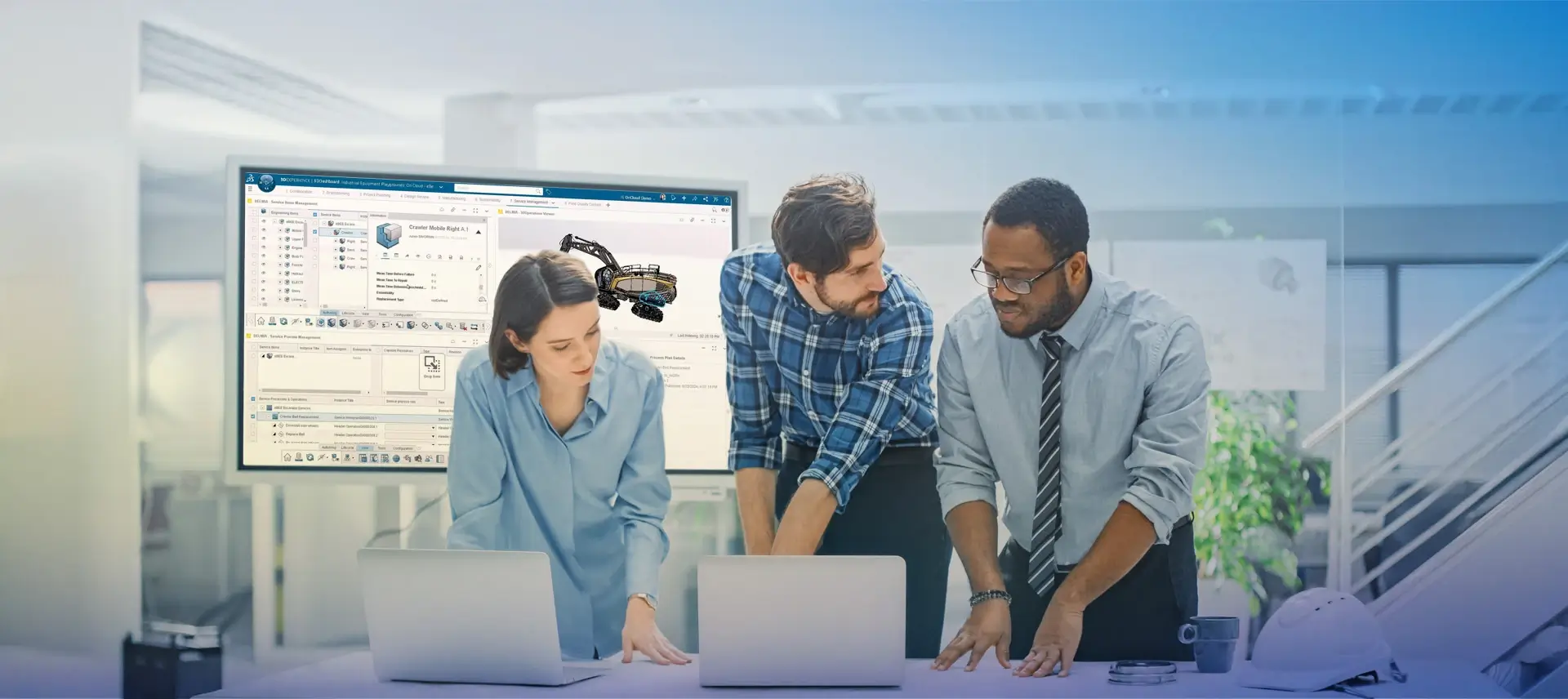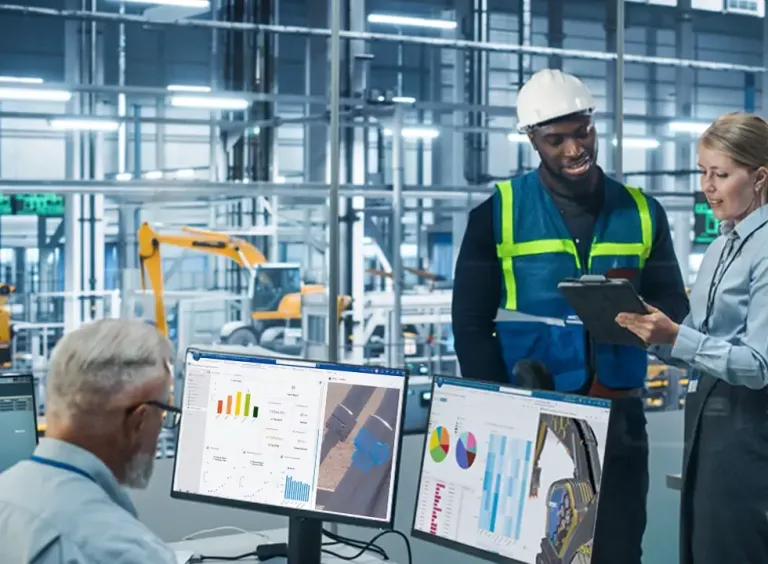Connected Equipment Lifecycle From Engineering to Manufacturing to Service
Break silos with real-time collaboration and digital continuity to accelerate innovation, efficiency and performance.
The Role of Digital Continuity From Engineering to Manufacturing to Service
Industrial equipment manufacturers today are under pressure to design, build and maintain complex machinery while delivering long-term value in quality and sustainability. Yet, traditional silos across engineering, manufacturing and service lead to delays and costly rework.
Dassault Systèmes’ 3DEXPERIENCE® platform addresses this challenge through a unified environment that consolidates all product and manufacturing information into a single source of truth for seamless collaboration. Enabled by our platform, the virtual twin technology further establishes digital continuity across the entire equipment lifecycle, from engineering to manufacturing to service.
The result is faster innovation, improved collaboration and reduced errors across every development stage. However, achieving this level of end-to-end integration brings challenges that manufacturers must overcome to maximize the full benefits.
Key Challenges Across the End-to-End Equipment Lifecycle
Coordinating equipment development from engineering to manufacturing to service involves diverse teams and processes, with unique challenges during each development phase that include:
- Design and engineering: Equipment must be engineered for performance, durability and compliance to achieve enterprise agility. Without effective simulation and seamless collaboration, design flaws can easily escalate into costly production issues or service failures later on.
- Manufacturing and production: This critical phase of transitioning from design to production demands efficiency, quality and cost control. Manual handovers and fragmented workflows often lead to rework, delays or inconsistencies that undermine competitiveness.
- Operations and service: Once deployed, equipment reliability is essential, as unplanned downtime remains one of the most expensive hurdles for manufacturing businesses. Our virtual twin solution enables predictive maintenance and real-time visibility to help minimize disruptions and extend uptime for better efficiency.
How the Virtual Twin Makes End-to-End Equipment Lifecycle Collaboration Easier
In a digital collaborative environment that connects the value chain from engineering to manufacturing to service, the virtual twin empowers industrial equipment companies with the level of agility they need to stay competitive. It delivers value across the full equipment lifecycle in four key ways:
Accelerate product development through simulation-driven engineering speeds up innovation.
Reduce cost and optimize manufacturing through digital continuity to minimize errors
Improve uptime and productivity using predictive maintenance and real-time monitoring
Enhance sustainability within operations by reducing waste and extending equipment lifespan
By breaking down silos and collaborating effectively through digital continuity, industrial equipment manufacturers can transform complexity in the production pipeline into opportunity. With faster innovation, optimized production and greater equipment reliability, they can deliver lasting value to drive resilience and remain competitive in the industry.

